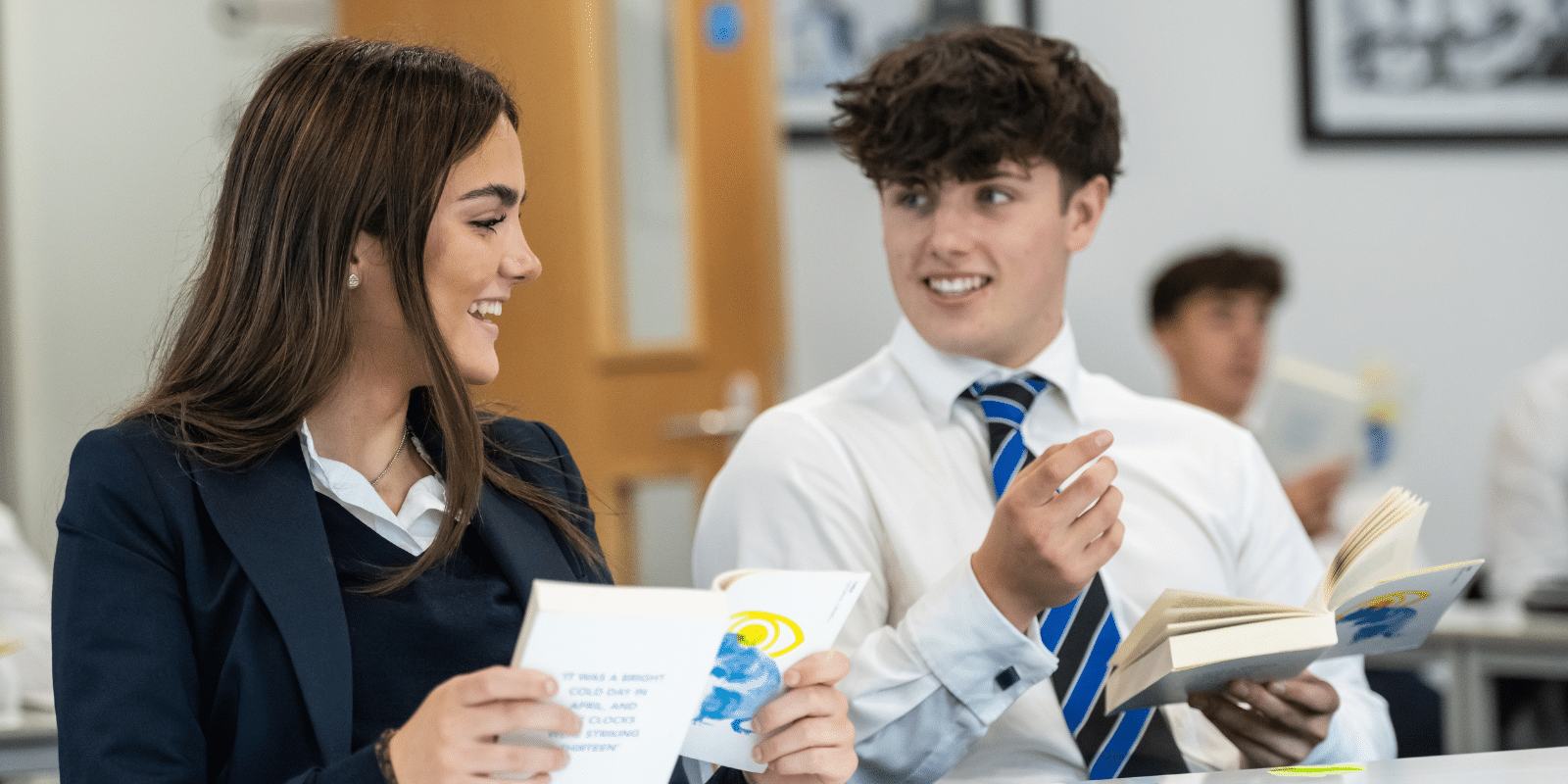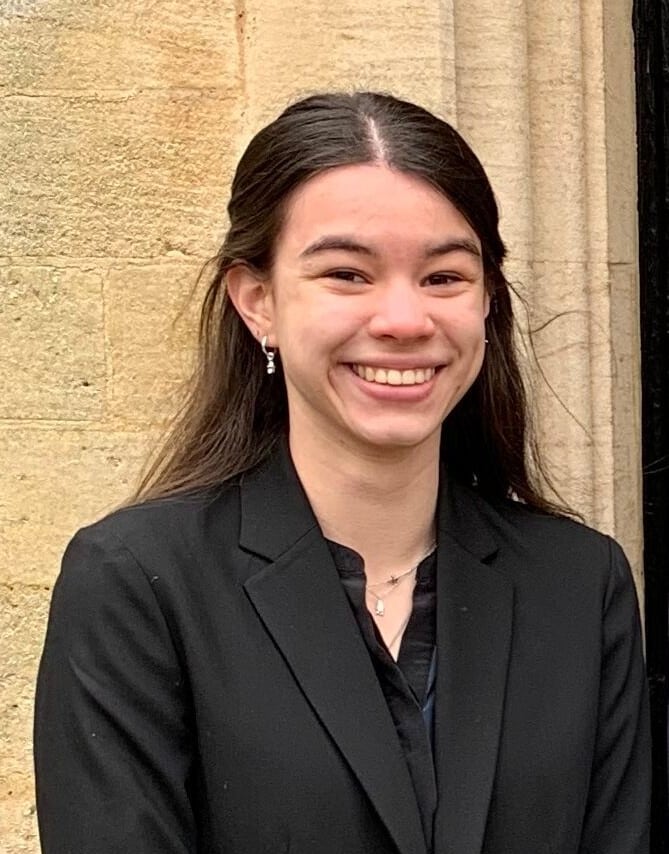Form 3 pupils have travelled to the battlefields of northern France to deepen their understanding of this significant period in history. This visit is an important part of their studies within the Connected Curriculum, drawing together key themes from their work in History and English lessons and future inspiration for work in other subjects. It’s also a deeply personal trip for the School, as pupils and staff visit the graves of the Old Oakhamians who fought and died in World War 1.
Archivist Aurore Guillomot-Bonnefond gave us the following updates from Group 2:
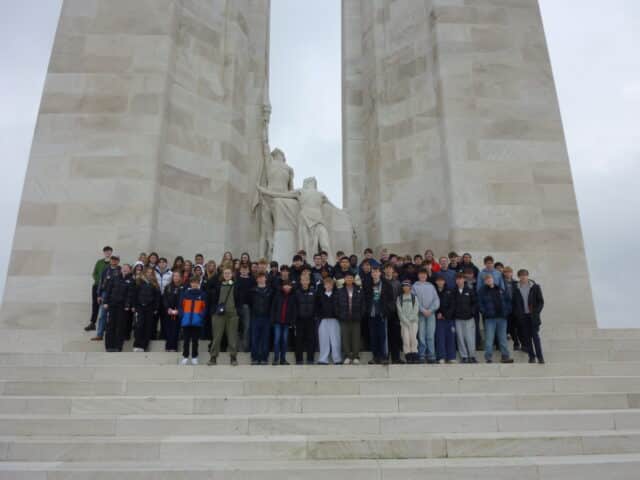
Day 3 – Thursday 13 February
The final day of the Battlefields trip is also the most memorable for most Oakhamians. Form 3 visited the German cemetery at Neuville Saint Vaast. As true historians, they used their skills to compare this cemetery to the British cemeteries and memorials they had previously visited. They were amazed at the sheer size of it, the fact that four names were recorded on one cross, and the absence of flowers and enclosures.
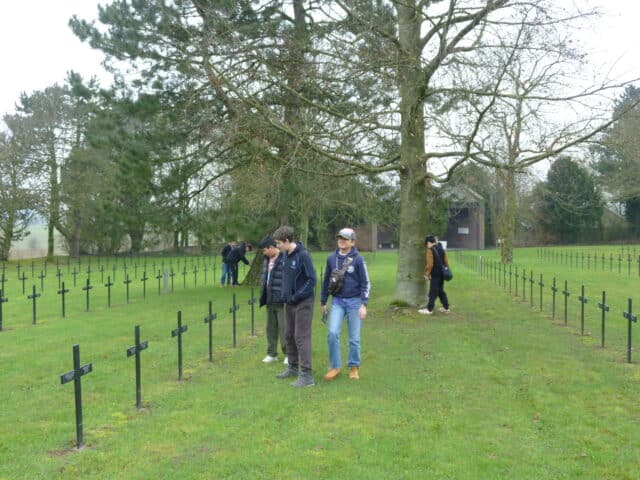
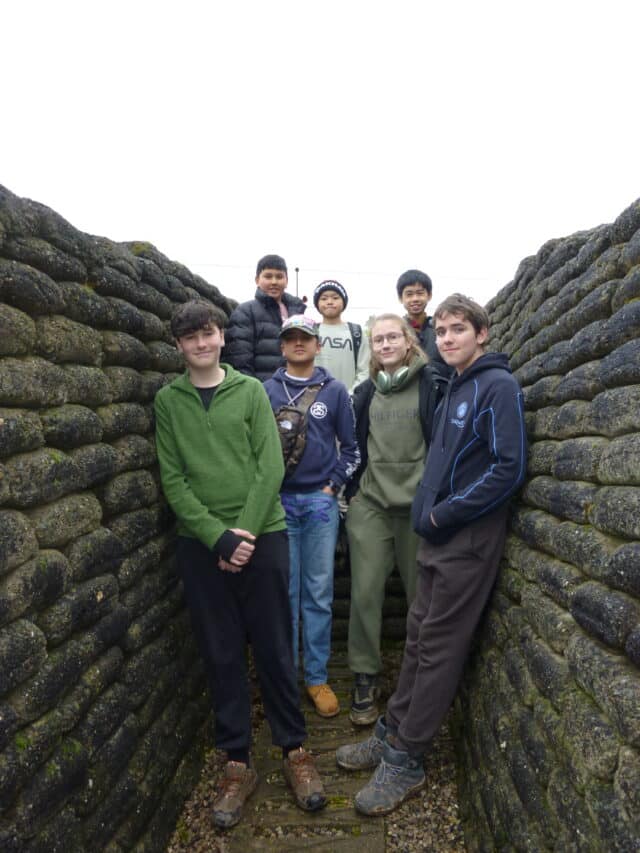 Finally, pupils got the chance to walk in a network of preserved trenches at Vimy Ridge. They learned about the importance of the battle for the Canadian nation. On 9th April, the Canadian army succeeded where the British and French had failed – taking the strategic ridge of Vimy from the Germans. An Old Oakhamian, Major Malcolm Neilson, was killed in action on the first day of the battle. Malcolm attended Oakham School between 1908 and 1912. He was a stalwart of the Cricket 1st XI for three years, he was in the choir, and served the School as Prefect. Malcolm had emigrated to Canada to study at Ontario Agricultural College, and he enlisted in the Canadian army when the war broke out.
Finally, pupils got the chance to walk in a network of preserved trenches at Vimy Ridge. They learned about the importance of the battle for the Canadian nation. On 9th April, the Canadian army succeeded where the British and French had failed – taking the strategic ridge of Vimy from the Germans. An Old Oakhamian, Major Malcolm Neilson, was killed in action on the first day of the battle. Malcolm attended Oakham School between 1908 and 1912. He was a stalwart of the Cricket 1st XI for three years, he was in the choir, and served the School as Prefect. Malcolm had emigrated to Canada to study at Ontario Agricultural College, and he enlisted in the Canadian army when the war broke out.
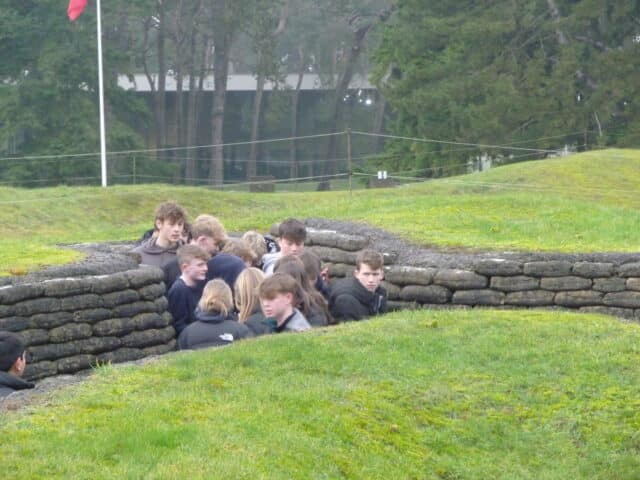
Day 2 – Wednesday 12 February
On the second day, Form 3 first stopped at the Lochnagar mine crater – the largest man-made explosion ever detonated before the atomic bomb in 1945. The British troops had dug a narrow tunnel under no man’s land, and had carved out a chamber that they filled with explosives. The aim was to destroy the German defences at La Boiselle before a large offensive on 1st July 1916. Pupils had the chance to walk around the crater to try and grasp the magnitude of the explosion.
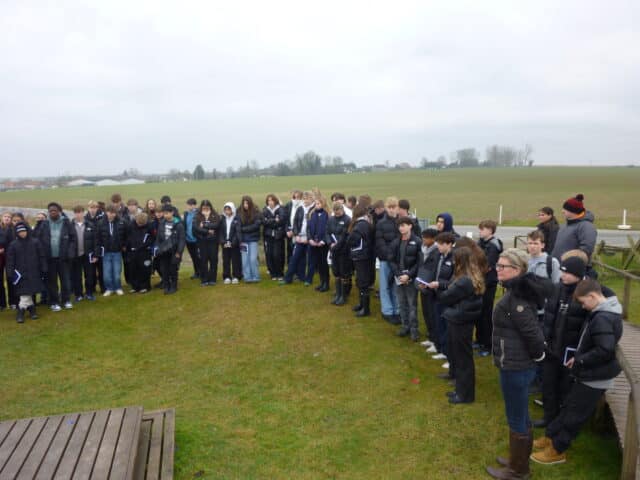
The next visit was at the Devonshire Cemetery. On 1st July 1916, the 9th and the 8th Devons were ordered to attack the German trenches at Mametz. Before the attack, Captain D.L. Martin, one of the Company Commanding Officers, had forecast that a machine gun, placed on Mametz village cemetery could cause heavy casualties. He was ignored, and he had to lead his men over the top as scheduled at 7.30am. Out of the 159 soldiers of the Devonshires, 123 were killed. Their bodies were brought to their front trench to be buried.
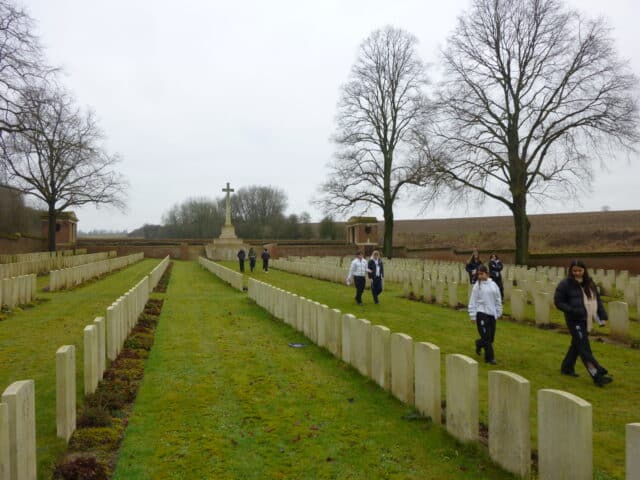
The next visit was at Thiepval Memorial. On the memorial are recorded more than 72,000 names of officers and soldiers who died at the Somme and have no known graves. Thiepval holds a connection to Oakham School, as six Old Boys are remembered there. John Paul Bromhead, posthumously awarded the Military Medal, spend eight years at School (1904-1912). He was one of the best runners of the school during his time, and he captained the 1st XV in 1911. John served the school as Head Prefect in 1911-1912. Alongside John on panel 16A, William Dewhirst is also remembered. Both fought as Privates in the Royal Fusiliers. The other OOs honoured at Thiepval are Alfred English (OO, 1900), Basil Wood (OO, 1905), John Pickering-Clarke (OO, 1911), and George Vidler (OO, 1914).
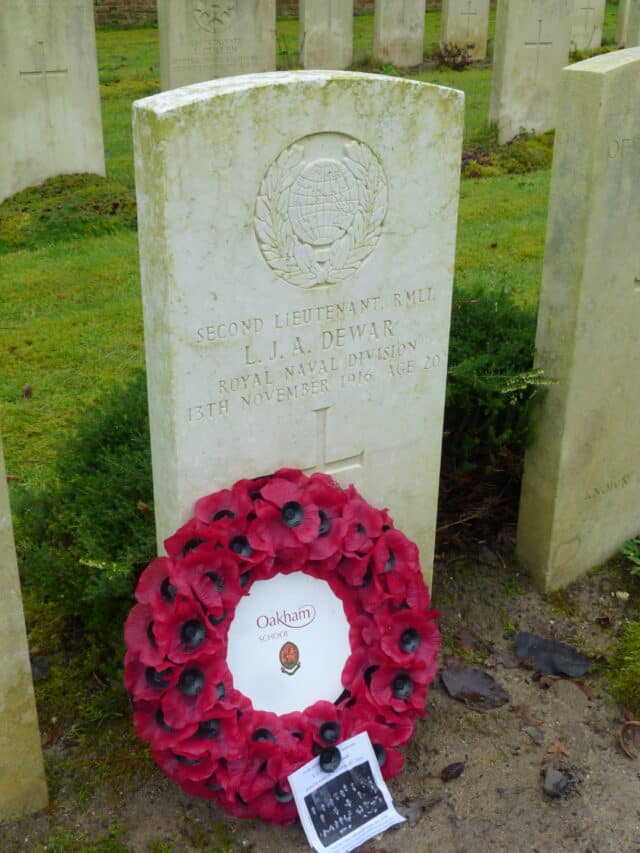
Form 3 held a memorial service at the Ancre Cemetery in honour of OO Jack Dewar, and all OOs who fell in the First World War. Jack is one of the best-known Old Boys. He was an exceptional all-rounder during his four years at School (1911-1915). He played for four seasons in the Rugby 1st XV, and for three in the Cricket 1st XI, and went on to captain both teams in 1915. He received several academic prizes on Speech Day and was a key member of the debating Society. Jack served the school as Prefect, then Head Prefect in 1915. He was killed in action only 11 months after leaving school.
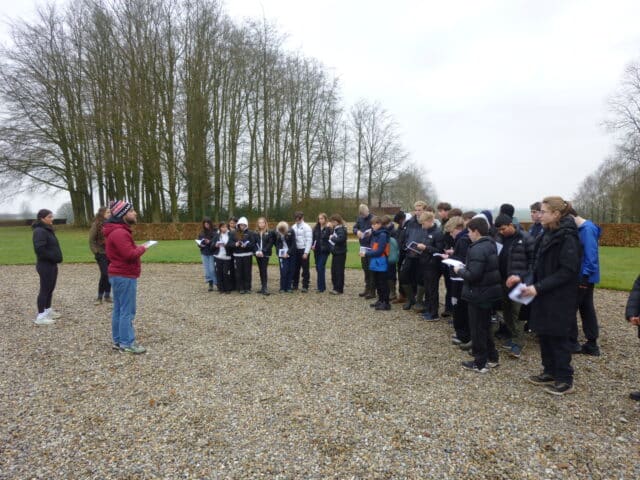
In the afternoon, Form 3 had the privilege to walk across a preserved battlefield at the Newfoundland Memorial Park. This gave them an idea of the importance of the terrain when launching attacks, and to understand why 1st July 1916 was a failure for the British troops and allies. They realized how the Germans could hold such a fortified front line, having a clear view of the British trenches, and soldiers going over the top would have been easy targets for their artillery and machine guns. On the first day of the Somme, the South Wales Borderers and the Inniskilling Fusiliers went over the top after a week of sustained artillery fire aimed at destroying the German defences. However, being so exposed uphill, their men were shot by two German machine guns strategically positioned. They were followed an hour later by the Newfoundlanders, who had to leave an even more exposed trench, and were killed almost as soon as they stepped into no man’s land.
The day ended with an entertaining quiz night. Form 3 enjoyed the challenge of general knowledge, dingbats and WW1 questions. Congratulations to the winners, Mr Powell’s group.
Day 1 – Tuesday 11 February
Despite the wet weather on arrival in France, Form 3 started their trip well. To prepare them for the first visit of the day, they watched the film My Boy Jack, based on the story of Jack Kipling, son of Rudyard Kipling. After being rejected by the navy because of his bad eyesight, Jack enlisted in the Irish Guards. One day after his 18th birthday, he led his platoon over the top on the first day of the Battle of Loos. Jack was declared missing, and later killed in action. Jack’s name is carved on the Loos Memorial.
The battle of Loos is tightly linked to the history of Oakham School. Indeed, on 13th October 1915, on the first day of the battle, four Old Oakhamians and a Master lost their lives in no man’s land. Below the panel of the Leicester Regiment, pupil Joshua laid a wreath before a moment of silence in honour of the lives and sacrifice of Captain Edward Langdale (Mathematics Master and OTC Commanding Officer), Lieutenant Basil Mogridge, and Sergeant Edward Franks. The other two OOs killed in action at Loos were Gordon Sanderson and William Johnson.
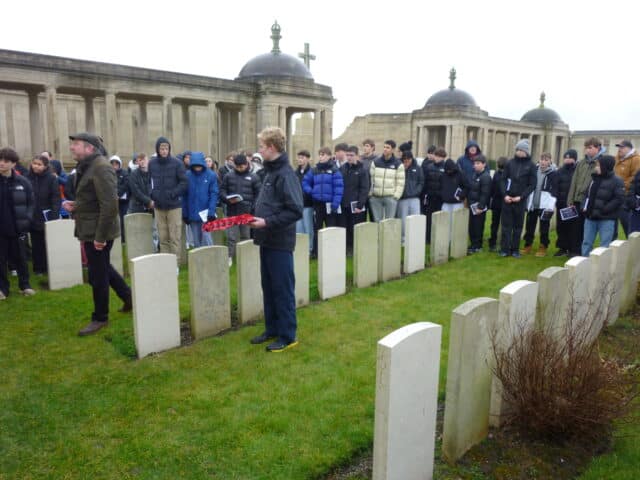
The second visit of the day was at Wellington Quarry in Arras. Form 3, equipped with replica helmets and a headset, followed their tour guide down an underground network of tunnels. They learned about the endeavour of New Zealander miners, who for six months dug tunnels and lived underground. The attack scheduled on 9th April 1917 was meant as a diversion to relieve the front line at the Chemin des Dames where the French were suffering heavy losses.
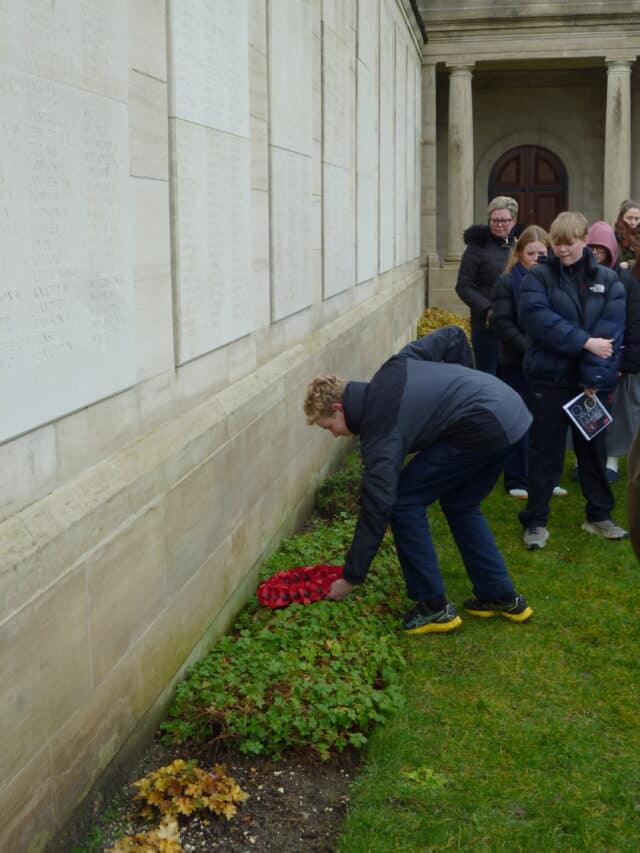
As is tradition, Form 3 ended their first day at the bowling alley, where they had the opportunity to show off their moves and some team spirit.
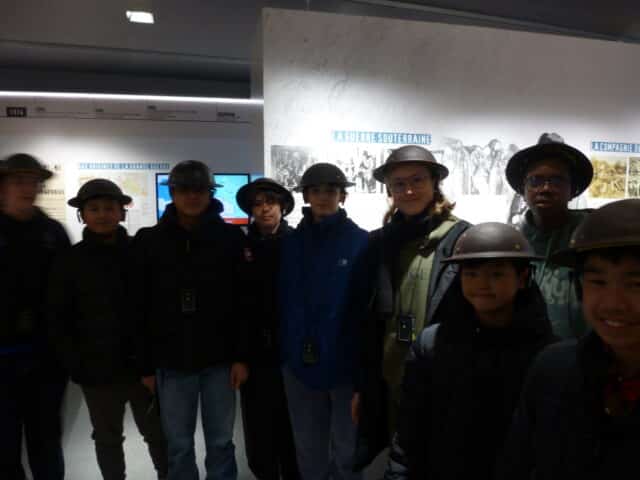
Alumni and Development Officer, Charlotte Woodward gave us the following updates from Group 1:
Day Three – Tuesday 11 February
The final day of the trip began with a visit to Neuville-St-Vaast German Military Cemetery. The Cemetery, only completed in 1983, is the largest German burial site in France and remembers 40,000 German soldiers. This poignant visit allows pupils to see and understand the differences between the British and German memorials.
Our last battlefields site visit was the Canadian memorial at Vimy Ridge. This incredible site commemorates the 3,598 Canadian soldiers who gave their lives during the attack on Vimy in April 1917. The memorial also holds preserved German and British trenches, alongside shell craters. Walking in and around the trenches gave the pupils an opportunity to understand what it would have been like for the soldiers looking out of their trenches into no man’s land, towards the opposing side. The battle of Vimy Ridge was an important moment for Canada and for the war, as Vimy was a German stronghold. Oakhamians also learnt about Old Oakhamian, Major Malcolm Nelson who had been in Ontario at Agricultural College when the war broke out. He enlisted and landed in France to fight alongside many other Canadian volunteers. Malcolm died on the first day of the battle.
We said goodbye to Mr Roberts and Dr Sheppard who stay in France to welcome Group 2. On our way back to Calais we drove past Group 2 and hope they have as great an experience as we did.
Day 2 – Monday 10 February
The second day of the Battlefields trip focuses on the Battle of Somme, with Form 3 visiting various sites throughout the day. Mr Roberts set the scene for 1 July 1916, the first day of the Battle of the Somme, with a trip to La Boiselle. Pupils walked around Lochnagar Crater, understanding the impact the scale of the 80-metre crater, which was caused by British explosives.
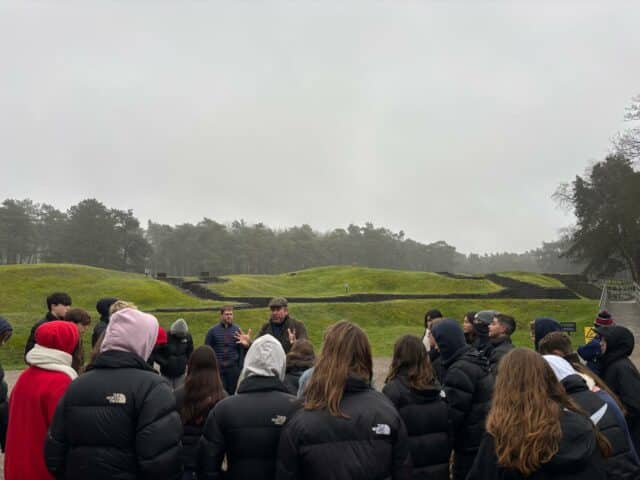
The next stop of the day was Newfoundland Memorial Park, where Oakhamians had an opportunity to look and understand the British trench system and no man’s land of Beaumont-Hamel, with both being preserved at the memorial park. Mr Roberts took them through what happened on this land during the Battle of the Somme on the morning of 1st July minute by minute. The Newfoundlanders were part of the second wave that went over the top into no man’s land. The pupils walked over the trench and down into no man’s land towards the ‘danger tree’ where, on 1st July the soldiers were funnelled down into a single line and killed by German machine gun fire, where 90% of the force died. The pupils got a better understanding of the advantage points of the terrain and how both the German and British used it to their advantage. The tour ended at the Highlanders Memorial, who were successful in capturing Beaumont-Hamel four months later.
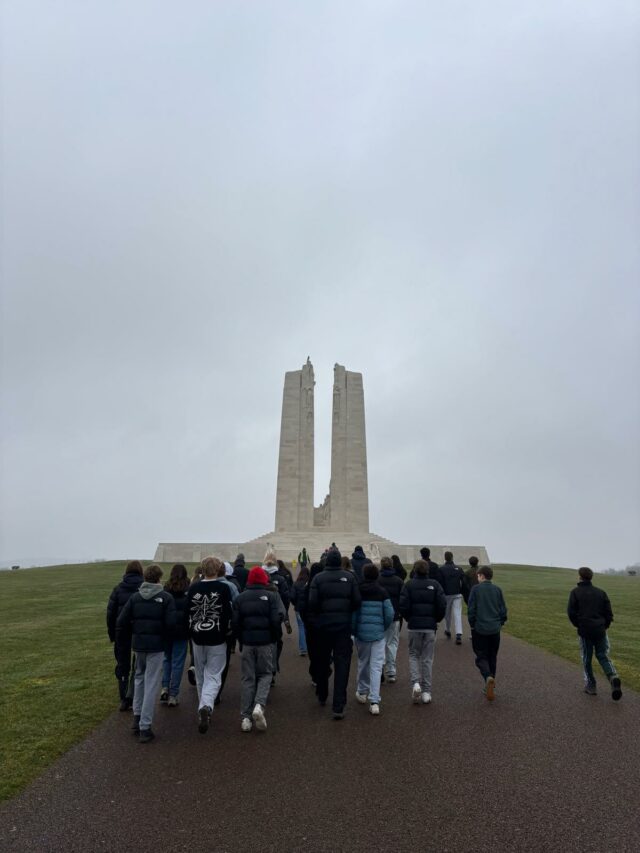 Before lunch pupils walked into the mine crater at Hawthorn Ridge. The crater, like Lochnager, was created by the British who placed two mines underneath the German trench systems. On 1st July at 7.20am, the explosion could be heard at Beaumont-Hamel, where the Newfoundlanders were waiting to go over the top.
Before lunch pupils walked into the mine crater at Hawthorn Ridge. The crater, like Lochnager, was created by the British who placed two mines underneath the German trench systems. On 1st July at 7.20am, the explosion could be heard at Beaumont-Hamel, where the Newfoundlanders were waiting to go over the top.
After lunch the pupils visited Thiepval Memorial, a French-British memorial dedicated to over 70,000 soldiers whose bodies were never found. Mrs Fearn gave a talk on the history and meaning of the memorial, then tasked each group with finding an Old Oakhamian who is remembered on the panels: Lieutenant George Vidler, Second Lieutenant John Pickering-Clarke, Second Lieutenant Basil Wood, Second Lieutenant Alfred English, Private William Dewhirst and Private John Paul Bromhead.
The next visit on the itinerary was the Devonshire Cemetery, a very poignant visit where all but two graves are members of a single battalion. The bodies of the fallen had been brought back to the trench they had defended. The carving on the entrance reads, ‘The Devonshires held this trench, the Devonshires hold it still’.
The final visit of the day was maybe the most memorable as Oakhamians visited Ancre Cemetery, where Old Oakhamian L.J. A. ‘Jack’ Dewar (‘15) is buried. Mr Favill led a service of remembrance with Oakhamian Leo laying the wreath. The pupils then got to hear all about Jack’s life at Oakham, his achievements on and off the sporting field, and how his death led to the donation of the Jack Dewar prize, which was gifted by Jack’s parents in his memory and is still given out on Speech Day today.
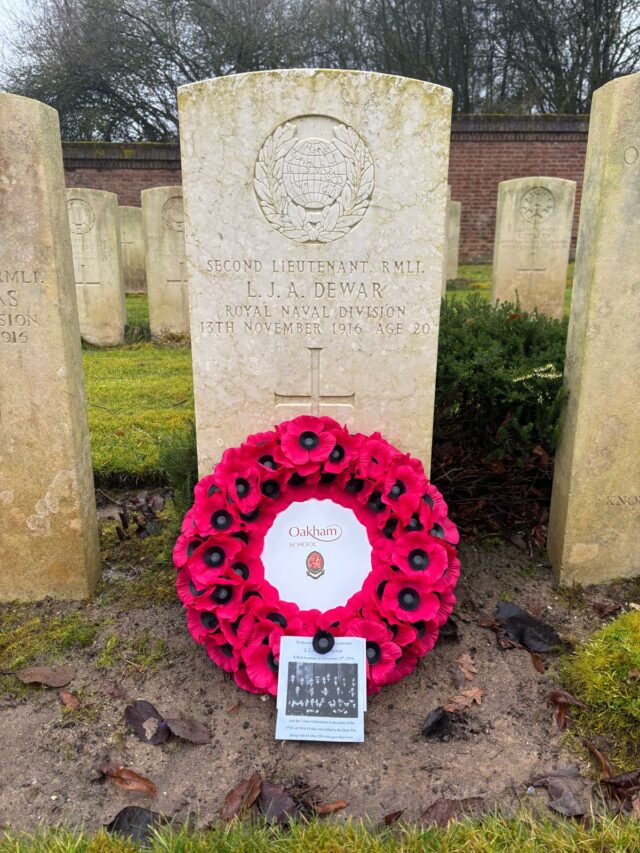 Sticking to tradition once again, pupils competed in a quiz, demonstrating not only their general knowledge but also what they have learnt so far. Congratulations to Miss Woodward’s group, the South Wales Boarders, who came away with the win (and mini eggs).
Sticking to tradition once again, pupils competed in a quiz, demonstrating not only their general knowledge but also what they have learnt so far. Congratulations to Miss Woodward’s group, the South Wales Boarders, who came away with the win (and mini eggs).
Day 1 – Sunday 9 February
After an early departure from Oakham, group 1 began their Battlefields trip with a viewing of My Boy Jack, the story of Rudyard Kipling’s son who fought and fell at the Battle of Loos. The movie helps set the scene for arrival at Dud Corner Cemetery at Loos, where 20,000 soldiers’ names, including Jack Kipling’s are carved on the walls. The cemetery also holds 1800 graves, with only 684 named, remembering all those lost in no man’s land during the battle.
The cemetery also holds the names of two Old Oakhamians and a schoolmaster who died during the Battle of Loos. Edward Langdale MC was a Maths teacher and Officer of the O.T.C. before the war broke out. Sergeant Edward Franks was a Day Boy from 1905 to 1910. Second Lieutenant Basil Mogridge was a boarder in School House from 1910 to 1914. We also remembered two other Old Oakhamians who fought and died at Loos, on the same day – Lieutenant Gordon Sanderson and Captain William Johnson. Current Oakhamians laid a wreath and held a minute silence in their memory under the Leicestershire Regiment panel.
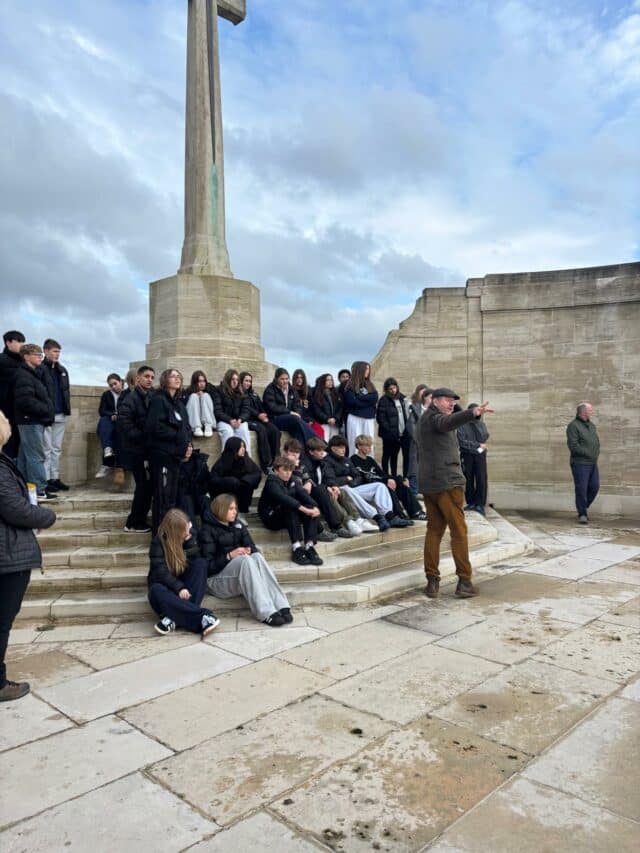 Form 3 then headed to Wellington Quarry, where they learned all about the caves that lie under Arras and how they were used during the First World War. The medieval caves were enhanced by the New Zealand soldiers, who lived in them to prepare for the Battle of Arras. A battle and surprise attack was planned as a diversion to relieve the French Army from attack in April 1917. The pupils had a guided tour 20 metres underground through the tunnels, where they got to see where an army of 24,000 men lived and worked in the lead-up to the battle and the harsh conditions they lived in.
Form 3 then headed to Wellington Quarry, where they learned all about the caves that lie under Arras and how they were used during the First World War. The medieval caves were enhanced by the New Zealand soldiers, who lived in them to prepare for the Battle of Arras. A battle and surprise attack was planned as a diversion to relieve the French Army from attack in April 1917. The pupils had a guided tour 20 metres underground through the tunnels, where they got to see where an army of 24,000 men lived and worked in the lead-up to the battle and the harsh conditions they lived in.
In true Battlefields tradition, our first night in France was spent at the bowling alley, where fierce competition and some questionable bowling occurred. After a long day, it was time to get some rest and get ready for Day 2!




